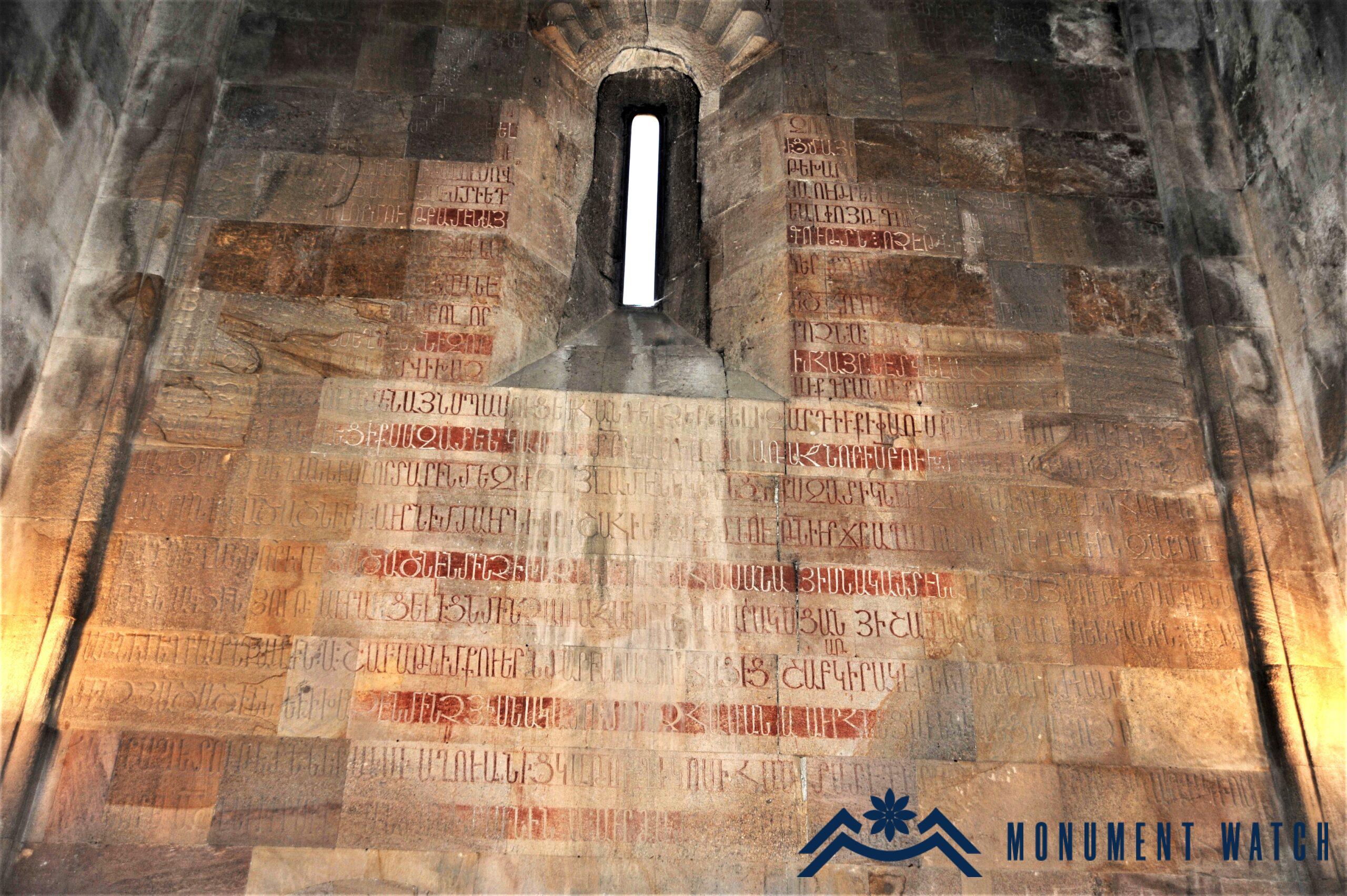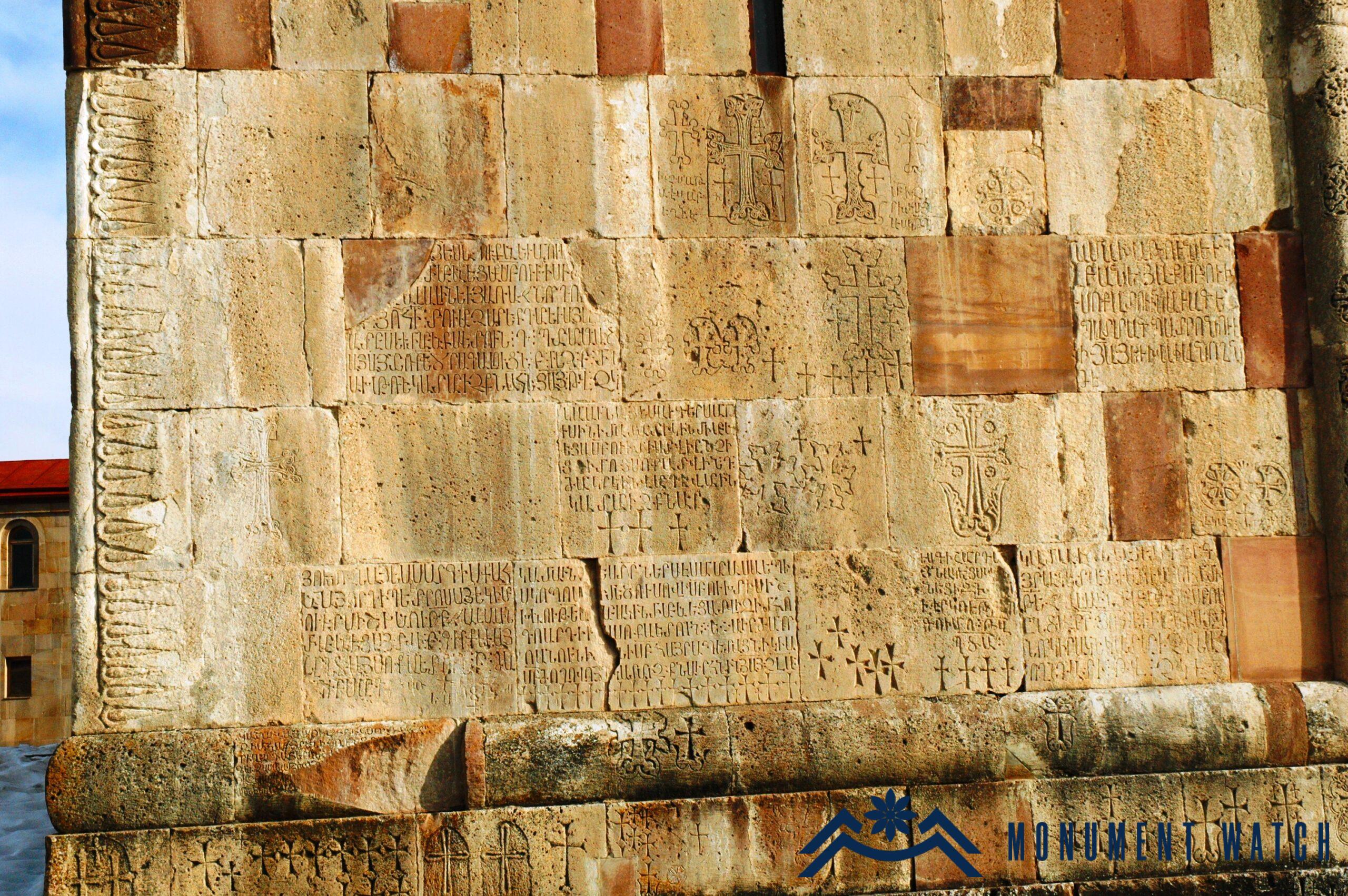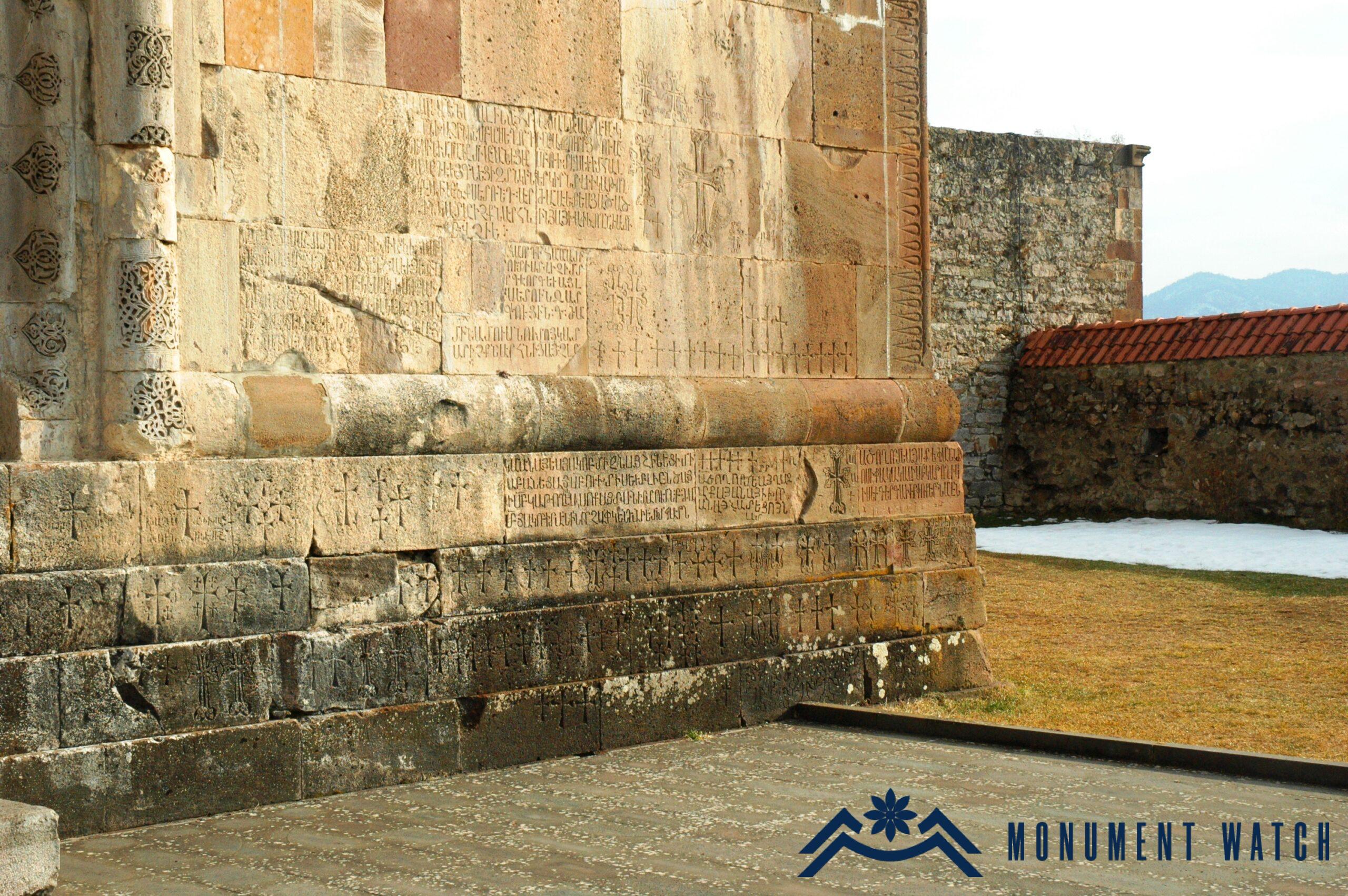Expropriation of Gandzasar Begins
As a result of military operations from September 19 to 21, 2023, Azerbaijan gained control of the Gandzasar Monastery. On October 3, the Department of Monument Protection of the Ministry of Culture of Azerbaijan issued a statement, alleging that the Armenian side had engaged in "illegal" restoration and repair work at the Gandzasar Monastery during the occupation. According to the Azerbaijani side, these actions contradict international norms and principles (https://t.me/KarabakhRu/38176?fbclid=IwAR3MAIywSg19bW-SNSYIYMoBv_unrQyyI1c7S4epkiegqPKLrnMxoN8w2NU).
The church, courtyard, and monastic buildings of the Gandzasar monastic complex, which had suffered extensive damage from rocket fire during the first Artsakh war, underwent restoration between 1993 and 1997. In the 2000s, these restoration efforts were financially supported by Levon Hayrapetyan, a renowned philanthropist from Vank village. The renovation efforts were carried out without altering the main group of monuments, ensuring that the appearance of the key historical structures remained unchanged. For more detailed information regarding the work performed, you can refer to this link https://monumentwatch.org/en/monument/gandzasar-monastery-during-the-years-of-independence/.
The only exception was the paving of the fence walls, which was halted by the relevant authorities in Artsakh at the time.
Not content with this, the Azerbaijani side released a statement on October 4, 2023, authored by a historical revisionist Rizvan Huseinov, claiming that inscriptions at the Gandzasar Monastery, specifically at the Surb Hovhannes Mkrtich church and Gavit, had been forged and tampered with by Armenians. He purportedly supported these claims by comparing old and new photographs of the inscriptions https://t.me/RH_inside/6749?fbclid=IwAR14Qned0HFZmkdT6fNtY2F3HN1fc66V_0FMXFdXPxOKj_ud8pLwpiDqLSA. Huseinov attempts to propagate the idea that the Armenian side conceals certain terms used in the inscriptions, including place names and names such as Hovsep Orbeli. He claims that these terms are present in a book dedicated to Gandzasar. According to him, the Armenian side deliberately avoids referencing these terms and even appears to be hesitant to quote Hovsep Orbeli https://karabakhchurch.com/?fbclid=IwAR3laW3EocSF4pVCtZZroNIcDDuJm5OwAsq04CxpmnjQ5A_NWvZXheUB5Bg. It's crucial to note that in 2016, Hayk Hakobyan, a researcher at the Institute of Archeology of the National Academy of Sciences of the Republic of Armenia and a Ph.D. in lithography, republished Hovsep Orbeli's book about the lithographs of Gandzasar and Havaptuk Monastery in Russian. This republication includes page-by-page photos of Orbeli's work, and it certainly does not contain any such allegations. Furthermore, over 140 inscriptions from Gandzasar have been published multiple times, and there is no evidence to suggest that any of these inscriptions have been intentionally altered or changed.
The inscription of Prince Hasan-Jalal Dola, who is credited with building the Church of Hovhannes Mkrtich in Gandzasar, has been extensively published and analyzed over the years. Numerous photographs and scholarly studies of this inscription also exist.
We also provide the exact starting part of the inscription, which refutes Huseinov's unfounded claims and aspersion. “I, Jalal Dola Hasan, a humble servant of God, the son of Vakhtang, and the grandson of Hasan the Great, am the rightful ruler of the vast and glorious province of Artsakh, including the majestic fortress of Hohanaberd. Before my father passed away, he entrusted me and my mother Khorishah, the daughter of Sargis the Great, a respected prince, with the task of constructing a church and establishing a cemetery for our ancestors in Gandzasar. The construction of the church commenced in the year 765 of the Armenian Calendar (1216) with the divine assistance of the Benefactor (God). After we completed the construction of the wall above the windows, my mother decided to renounce worldly life and embarked on her third pilgrimage to Jerusalem. She embraced a life of devotion, wearing a cilice and dedicating many years in seclusion near the Temple of the Lord. On the day of the Holy Resurrection of Christ, she peacefully passed away and was laid to rest there. As for us, realizing the importance of avoiding idleness, we hastened to finish the construction work, seeking the holy blessings of the Merciful God. We accomplished this task in the year 787 of the Armenian Calendar (1238)... By the grace of the most merciful God, I adorned it with a multitude of sculptures, embellishing the dome with an array of compositions." (Full text: CAE 5, 38-40 (see also https://monumentwatch.org/en/monument/the-monastery-of-gandzasar-general-information/)).
By the way, the Armenian academic community has never rejected the terms "Caucasian Albania" or "Aghvank" as mentioned in Armenian inscriptions. This is because the Armenian Christian community of Artsakh and Utik has historically served as the intellectual and administrative center of the Caucasian Albanian Church since its inception. Catholicoses from Caucasian Albania were of Armenian origin, and they primarily spoke and wrote in Armenian. Consequently, they had no compelling reason to inscribe messages in other languages on the walls of their monasteries and churches.
Bibliography
- CAE 5 - Corpus of Armenian Lithography, Issue 5, Artsakh/compiled by S. Barkhudaryan, Yerevan, 1982.
- Ulubabyan 1981 - Ulubabyan B., Gandzasar, "Armenia" publishing house, Yerevan.
- Օrbeli 2016 - I. Orbeli, Inscriptions of Gandzasar and Havotsptuk, collected and prepared for printing by A. Hakobyan, Yerevan․


